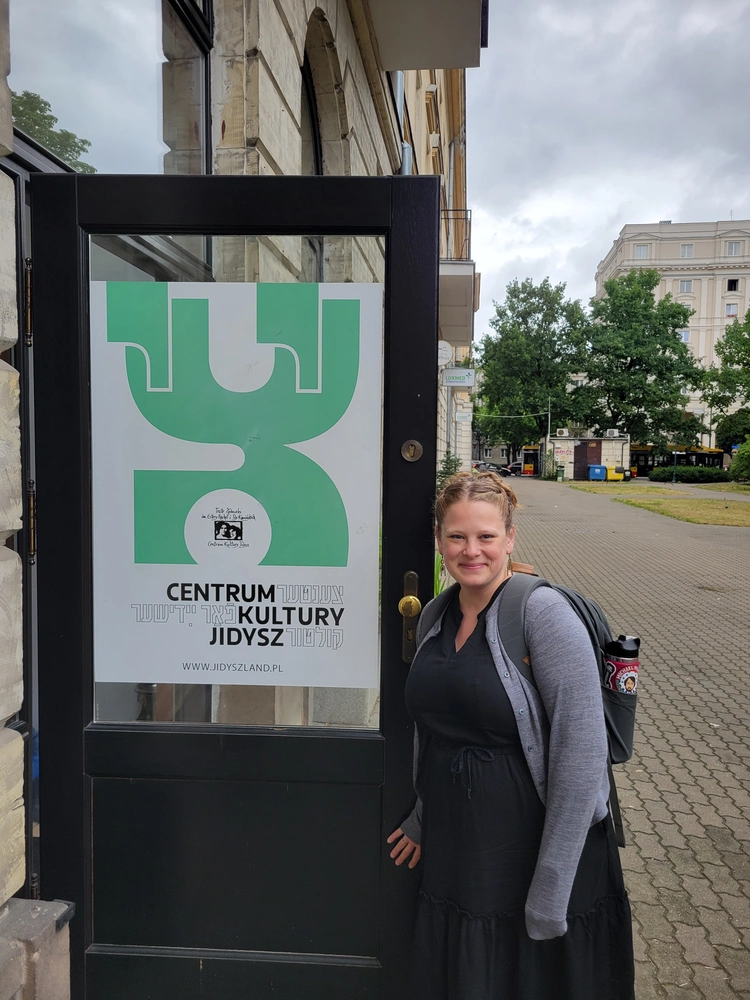
This summer, I attended the 23rd International Summer Seminar in Yiddish Language and Culture at the Centrum Kultury Jidysz in Warsaw, Poland. I was part of the level two cohort and each day we spent four hours studying Yiddish. Our daily Yiddish lessons included a review of concepts like questions terms [װאָס, װער װען, װוּ…], nominative, accusative and dative forms, past and future tense, and time. We also learned new vocabulary, including animals and the sounds they make, and weather terms. What I found to be most useful was the textual practice wherein we both read aloud and translated songs and short stories. Each day we had homework to practice these various skills, some of which involved creative writing.
The overall theme for the seminar was the Yiddish Press. While our level two curriculum did not necessarily align with the topic, additional activities at the Centrum Kultury Jidysz did, including Joanna Nalewajko Kulikov’s lecture The Birth of Mass-Circulation Yiddish Press: A Chapter in Cultural History of East European Jewry and Lejzer Burko’s (Haredi) Yiddish Press Today. Additional programming spoke to the varied cultural aspects of Yiddishkeit, including a screening of the short film Labzik: Tales of a Clever Pup, an embroidery circle [שטיקערײַ־קרײַז], a bookbinding workshop, conversation classes, and cooking. Both weeks ended with a lively Shabes-tish.
While this program was wonderful in helping me better hone my Yiddish speaking, reading, and writing abilities, these two weeks also offered a great opportunity for me to engage with an international community of Yiddishists, some of whom share my academic interests in memory studies and art history. I was also able to use this trip to explore more deeply my own research interests in trace, memory, abstraction, and the Holocaust, through visits to the POLIN Museum of the History of Polish Jews, the MI POLIN Mezuzah Center, the Museum of Warsaw, the Praga Museum, the Jewish Historical Institute, the Jewish Cemetery at Okopova Street, and a host of public sculptures and memorials including the Monument to the Ghetto Heroes and the Ringelblum Archive Commemoration Monument. During a weekend in Krakow, I was also able to visit the Old Synagogue Museum, the Galicia Jewish Museum, Wawel Cathedral, St. Mary’s Church, and Auschwitz-Birkenau. As I continue with my PhD in art history, seeking to center my own research in trace, abstraction, Jewish identity, and memory in art and Judaica, the work I did in the classroom and my explorations beyond in both Warsaw and Krakow will certainly influence my future pursuits.